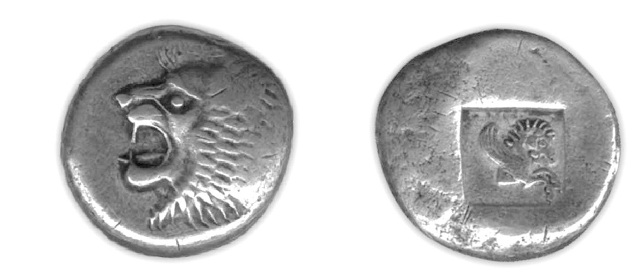The idea to have an online journal related to Classical Greece and Roman studies in East Asia was first discussed at one of the board meetings of the Taiwan Association of Classical, Medieval, and Renaissance Studies (TACMRS) in early 2021. Nicholas Koss was then asked to investigate the possibility of having such a journal. He contacted Classical scholars in China, Japan and Korea and found in each country much interest for this kind of journal. Subsequently, the TACMRS board decided to start The East Asian Journal of Classical Studies (TEAJCS) and asked Nicholas Koss to be the editor-in-chief. The first task was to find articles to be included. Then, books published in East Asia related to Classical Studies, both studies and translations, were selected to be reviewed. At the same time, bibliographies were compiled on studies and translations done in East Asia in the 2018 and 2019. Finally, in the fall of 2022, the first issue of TEAJCS appeared online.
Volume No. 1 (2022)
Of Wellbeing or Savior? Emending the Herennia Announcement
Ching-Yuan Wu, Peking University Abstract This paper discusses a widely accepted emendation to…Thucydides’ Account of the Athenian Plague
Ahn Jaewon, Seoul National University Abstract This paper offers a reading of Thucydides’…Sophocles Philoctetes 1019
Makoto Anzai, Hokkaido University Abstract and Introduction The purposes of this short textual…The Muziris Papyrus and the Eastern Maritime Trade in High Roman Empire Economy
Chen Siwe, Suzhou University of Science and Technology Abstract It can be inferred…Francis Xavier and Latin Education in Asia
Taida Ichiro,Toyo University Abstract Francis Xavier was a Jesuit missionary. He left…A Study of the Material and Firing Reactions of Relief Dots on Ancient Greek Red-figure Pottery
Chia-Lin Hsu, Tunghai University Abstract Red-figure pottery (c.530-c.250 BCE) is one of…Rome’s Strategy against Parthia: Nero’s Armenian War (54~63 CE) and The Treaty of Rhandeia
Kee-Hyun Ban, Korea Military Academy Abstract This study re-investigates Nero’s Armenian War of…
Bibliography of Classical Greece and Roman Texts Published in China in 2018
Prepared by Liu YueBibliography of Classical Greece and Roman Texts Published in China in 2019
Prepared by Liu YueBibliography of Classical Greece and Roman Texts Published in Japan in 2018
Prepared by Taida Ichiro.Bibliography of Classical Greece and Roman Texts Published in Japan in 2019
Prepared by Taida Ichiro.Bibliography of Classical Greece and Roman Texts Published in Korea in 2018 & 2019
Prepared by Kee-Hyun BANBibliography of Classical Greece and Roman Texts Published in Taiwan in 2018
China-Update Classics 2021
Sven Günther, Northeast Normal University
Mouri Mitsuya and Hosoi Atsuko, eds. 古代ギリシア遥かな呼び声にひかれて——東京大学ギリシア悲劇研究会の活動 To the Very Echo: Performances of Greek Tragedy by the Greek Tragedy Study Club (GTSC), University of Tokyo. Ronsosha, 2019.
Reviewed by Miku Sueyoshi, Ph.D. student, Cambridge UniversityLiu Wei 刘玮. Gongyi yu sili: Yalishidoude shijian zhexue yanjiu (公益与私利: 亚里士多德实践哲学研究) Common Good and Private Good: A Study of Aristotle’s Practical Philosophy). Peking University Press, 2019.
Review by Francis K. H. So, National Sun Yat-sen UniversityYan Shaoxiang. Xila yu luoma: guoqu yu xianzai 希腊与罗马: 过去与现在 (Greece and Rome: Past and Present). Commercial Press, 2019.
Reviewed by Dr Daniel Canaris, Sun Yat-Sen University, GuangzhouFrom Constantinople to Chang’an: Byzantine Gold Coins in the World of Late Antiquity.
Edited by Sven Günther, Li Qiang, Lin Ying and Claudia Sode, Institute for…Yasunori Kasai, editor. Dancing Wisteria-Essays in Honour of Professor Masaaki Kubo on his Ninetieth Birthday: Vol. 1, Life and Works of Professor Masaaki Kubo, Vol. 2. Bibliotheca Wisteriana, Tokyo 2020.
Reviewed by Yasunori Kasai, professor emeritus, The University of Tokyo, Tokyo, JapanP. Ovidii Nasonis Fasti. Translated into Chinese with notations by Yongyi Li. Beijing: China Youth Publishing Group, 2020.
Reviewed by I-ting Su, Independent scholarRock Solid: Volume 36/2 of the Journal of Ancient Civilizations
Reviewed by Michael Skupin, emeritus, Chinese Culture University, Taipei
See AWOL's full List of Open Access Journals in Ancient Studies












































 Stumble It!
Stumble It!
